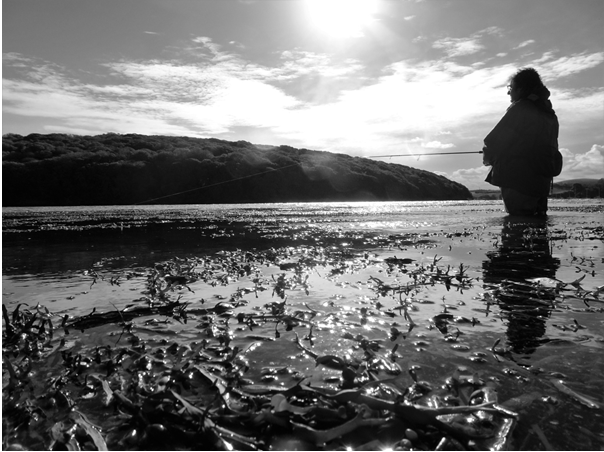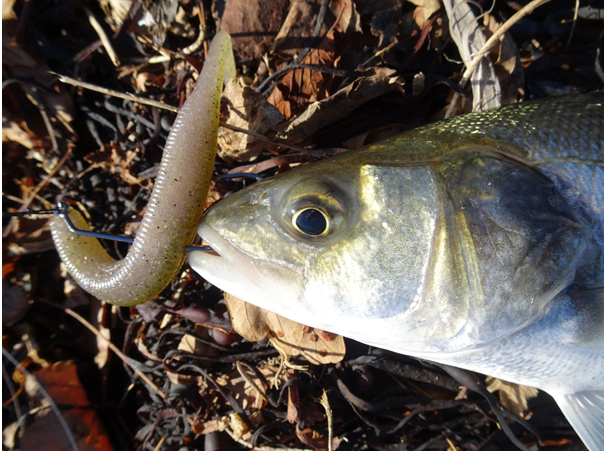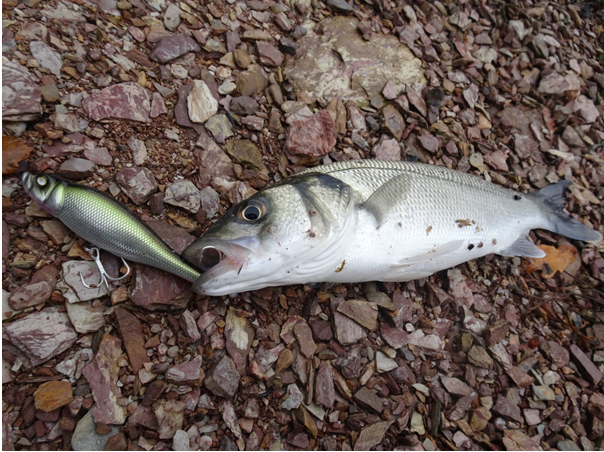Are you a ‘Changer’ or a ‘Mover’...? (Part 2 of 3)
Posted by Marc Cowling (South Devon Bass Guide) on 17th Nov 2018

In Part 1 of this series I highlighted three examples - the first two were when obvious signs of bass prey behaviour had been spotted, where you’ve attempted to match what is present with your lure choice (in regards to shape, movement, size and colour) and subsequently persevered with their use. The third on the other hand was an example of when I would consider changing the lure type if I was almost certain there were bass in the vicinity, given the mark and overall conditions (tide, weather, sea conditions, etc.). Therefore, in this part I will offer up some more of these examples, whilst ultimately remaining in roughly the same position on the same beach, rock, reef, headland or estuary.
Example 4
You are lure fishing over a reef (weed/rocks) in calm, choppy or slightly turbulent sea conditions in which the water is very shallow (2-6ft) and clear through to slightly cloudy. Within the submerged area in front of you will be a multitude of fish species (notwithstanding the crabs, prawns, worms, etc that will also be present) ranging from red/orange/cream bellied wrasse, pollack, blennies, rockling and suckerfish alongside more ‘silvery’ items such as sprat, sandeels and immature mullet or bass. This is the scenario when anything inhabiting that stretch of coastline is more than likely to be on the menu. But very often where bass are concerned, they will have a particular item forming their ‘feeding search image’, therefore, if bites or fish aren’t forthcoming, then by rotating through the lure types you could stand a better chance of connecting with one of our spikey friends.

The extremely versatile OSP Do Live Stick can be ‘made’ to look like all manner of bass prey items depending on the way you retrieve it. This bass responded to the lure being fished at pace and just under the surface, after initially being twitched and drifted down the flow of an estuary without a touch.
Example 5
A headland, where deeper water (greater than 15ft) is often present, and where the bass could be swimming anywhere in the water column requires the bass lure angler with a potential dilemma. Do you cast and retrieve a lure very close to the seabed, at mid-water level, closer to the surface or on the surface itself? Again, it could all be very dependent on where any bait fish are located or if there is any structure by way of protruding or submerged rock formations situated within casting range that the bass will look to wait around waiting ambush. In this scenario I will very often work a surface lure close to any visible eddies (swirls on the surface) or white aerated water breaking around the rocks first of all just to see if anything ‘rises’ or hopefully smashes it to pieces! If there isn’t, then I will gradually attach lures that will swim deeper and deeper ranging from medium to deep diving hard minnows or paddle tail lures incorporating a weighted jig-head.

This bass was hooked on a sub-surface medium diving hard minnow (a Daiwa Shoreline Shiner Z97F) from a headland where a powerful lateral current was evident, yet a surface lure fished during the same session failed to attract any interest (except from garfish).
Example 6
A very similar situation to a headland in regards to the strength of the current, but one where the water is often shallower is, of course, an estuary. You could say that this set of circumstances represents a combination of both examples 5 and 6, in that the bass could be ‘switched on’ to a specific fishy food source or expecting a certain type of creature to appear in a certain area (behind a sandbank, close to the weedy margins or in a deeper pool perhaps). Unlike in deep water however, rather than attempt to ‘ring the dinner bell’ via the use of a splashing, rattling, struggling or quickly moving object above their heads I will generally go down the ‘subtle’ route first by way of drifting and twitching a weedless, and importantly weightless soft plastic down in the flow, followed by bumping a paddle tail perhaps before switching over to a shallow diving hard minnow or a small surface lure to mimic fleeing and scattering bait fish.

A small bass admittedly, but on that grabbed a surface lure (the Whiplash Factory Spittin Wire) after various other lure types had been retrieved through the area. It could well of been sitting there all along but the change of lure triggered an attack.
Caveat
Yes, I say it a lot, but always keep your eyes peeled when out on the coastline which is why all of suggestions above come with the caveat that is - if I see or witness anything that provides a clue as to what the bass could or definitely are feeding on, the result will be me changing what’s on the end of the leader in a flash. This is something that, as a guide, is extremely important if I am to consistently place my clients onto bass. Moreover, it is one of the main reasons that I do not fish when I am with them - to remain observant alongside having the ability to constantly assess what is happening around us.
Speed and Angle
To conclude Part 2 are two final points that are in reality a completely separate series of blog posts in themselves - and that is to ‘alter’ the way you are actually retrieving a lure rather than change it. Without wanting to confuse the reader, there are many, many instances when a change of the retrieve speed (be it faster or slower) or even by introducing a pause or a twitch has induced a hit when the underwater world before you has appeared devoid of bass for hours. Furthermore, there is often a case to change the retrieving angle so that any bass in situ are presented with more of a silhouette or profile of the imitation. This subject leads me nicely onto Part 3 when I discuss when I would consider moving location altogether...
Marc Cowling is a successful bass lure fishing guide based in South Devon.
